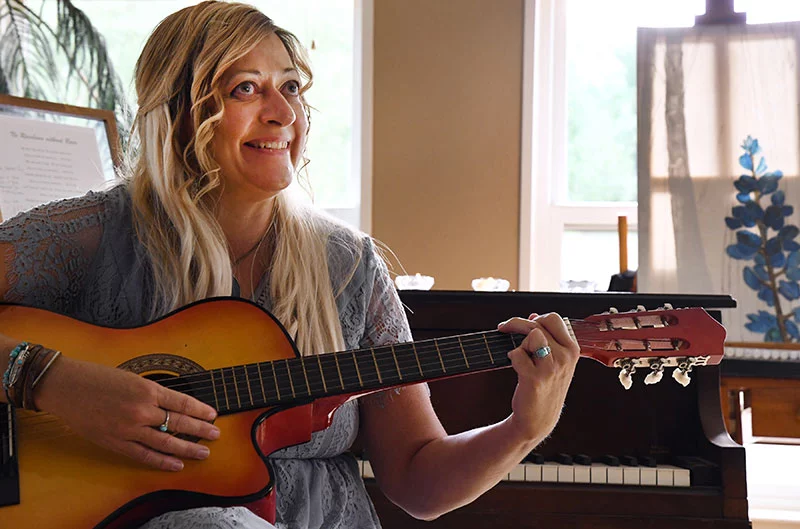
As Teresa Brooke was recovering from an incredibly rare thyroid incident that caused a heart attack, a stroke, cognitive damage, near amputation of her leg and almost left her blind, her first words were not spoken.
She sang. In Swedish.
Waking up from more than two weeks in a coma after doctors were not sure she would survive – or whether she would walk, see or speak – she showed signs of life and began communicating but in an unexpected way.
“My mom’s family was from Sweden, and it was my second language as a child. While I was recovering, I heard my mother singing nursery rhymes in my head in Swedish like she used to when I was growing up, so that was one of the first things I did. I was confused and living in a dream world, but I remembered those songs.”
Teresa’s treatment and rehab at UCHealth University of Colorado Hospital was nothing short of remarkable. Her team included doctors and caregivers from many departments including ophthalmology, vascular surgery, endocrinology, music therapy and physical and occupational rehabilitation. Even the volunteer therapy dogs stopped by her room.
They all worked in concert – whether it was providing the lifesaving care she needed in her surgical trauma intensive care unit room when she first arrived, or during her subsequent recovery in the UCHealth rehabilitation unit.
“During one of the first days we were there, a doctor told me she was the sickest person in the entire hospital,” said Teresa’s partner Tony Andrist. “It seemed she had every doctor there helping her get to where she’s at today. She has come so far, and she is so lucky.”
Their monumental effort, combined with Teresa’s determination to walk out of the hospital with her musical talents intact, means that she is back today making music for friends and family.

“When I first treated Teresa, she’d had a heart attack and a stroke, and there were moments when we didn’t know if she was going to survive,” said Dr. Daniel Ozzello, UCHealth ophthalmologist, whom Teresa credits with saving her eyesight. “But her entire team came together and said, ‘We are going to do everything we can to make sure she leaves here and plays the piano again and has a chance for the life she had.’ We all gave it everything we had, and she’s made a remarkable recovery.
“Her story is just so inspiring. When I met her, she was in the intensive care unit and in a really tough spot. But through all of this, she has continued to progress by putting one foot in front of the other. Her attitude and courage are remarkable.”
Because music has played such an important part in Teresa’s life and a vital role in her healing, it has allowed her to recover note by note, as well as step by step.
“There is evidence that as humans, we are hardwired for music. Our speech has pitch and inflection; we walk with rhythm, we sing, we dance, and it is truly the universal language,” said Angela Wibben, board-certified music therapist and supervisor of the UCHealth Creative Arts Therapies department.
“We don’t have just one musical center of our brain, but several areas that process different qualities of music. Music also has a way of bypassing neurological damage and injury to optimize learning and rehabilitation. It provides such great access to our own humanity and to memories formed in youth, and it often stays with us the longest when our other faculties are impaired or gone.”
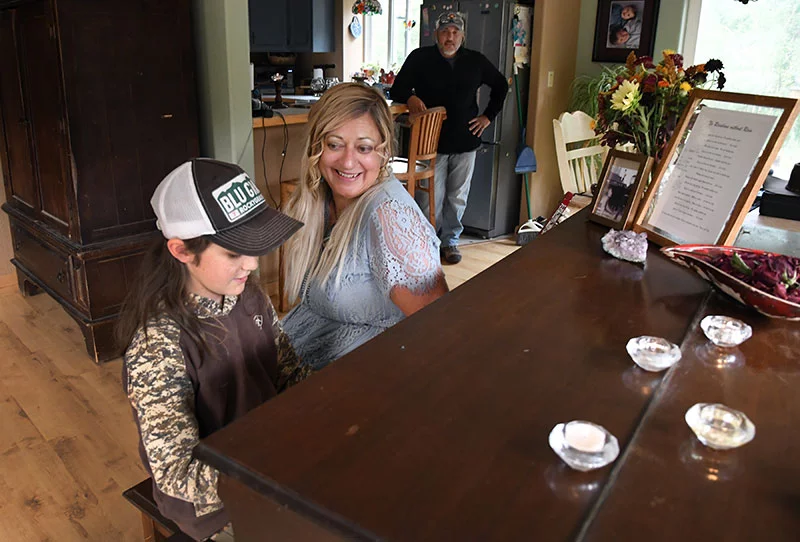
How did a rare and dangerous thyroid condition almost kill Teresa?
The thyroid is a small butterfly-shaped gland in the front of the neck. The hormones it produces control many important aspects of our health, including regulating our metabolism, growth, weight, energy level, internal temperature and skin, hair and nail growth.
Too little of these hormones is called hypothyroidism, or an underactive thyroid, and can lead to brain fog, weight gain, depression and extreme fatigue. An overactive thyroid is called hyperthyroidism and occurs when the thyroid produces too many hormones. In severe cases, it can increase the risk for blood clots, heart attacks, strokes, eye problems and worse.
Unfortunately, the consequences of Teresa’s hyperthyroidism would mean she would suffer all of these dire outcomes in the first few days of her illness.
“Thyroid hormones have a broad range of impacts on the body, including metabolism, heart rate, digestion, temperature, bone growth and even brain function. This is why patients can present with so many symptoms and why the presentation can be so severe,” said Michaela Gregory, who was a UCHealth endocrinology fellow when she treated Teresa.
Originally from Southern California, Teresa moved to Colorado more than a decade ago, working as a preschool teacher in Allenspark, a small town east of Estes Park near the southeast corner of Rocky Mountain National Park. It was there that she met Tony, and they were happy with a large family, including two dogs and his four children.
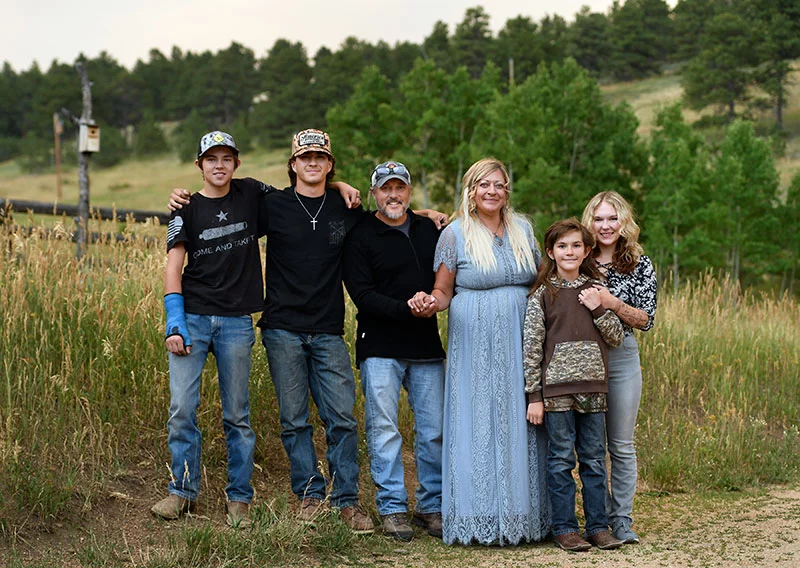
She was 44 and healthy, and though she had been having some thyroid problems, she was trying to manage her symptoms while waiting to see a specialist. But last year in April 2024, she noticed she was losing sensation in her right leg. Anxious neighbors worried she had formed a blood clot and called 911. She was first transported to UCHealth Longs Peak Hospital in Longmont, and then, as her condition worsened, to the ER at University of Colorado Hospital, a Level 1 Trauma Center.
“By the time I got there, I was in a really bad state,” Teresa remembered. “In the ER, they said I had a blood clot in my right leg and that they would do everything they could to save it, but that they might have to amputate.
“Tony was my savior and my ange,l advocating for me. My family all flew out … no one knew if I was going to make it.”
At the time, Teresa was unaware of just how sick she was or what was causing it. But doctors believe Teresa had likely been experiencing extreme hyperthyroidism prior to her arrival. The high level of hormones in her body was causing an irregular heartbeat, and her heart was creating clots, which had traveled to her right leg and decreased the blood flow there. She needed emergency surgery if doctors were to save her leg.
“We were not sure how much of this was survivable,” said Dr. Jeniann Yi, the UCHealth vascular surgeon who sprang into action to save Teresa’s limbs. “She was very sick.”
In the ER that April day, Teresa’s care team faced multiple close calls since many of Teresa’s organs were catastrophically affected all at once.
“She had clots built up in her heart and they were showering through her entire body,” Tony said. “It was affecting everything.”
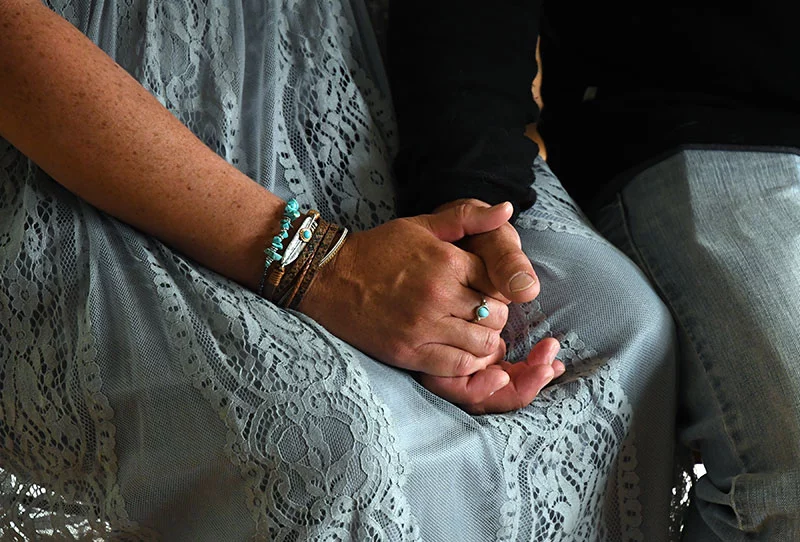
Teresa needs emergency surgery to avoid leg amputation
With her right leg quickly losing neurological function from the lack of blood flow, Yi performed a minimally invasive thrombectomy to remove the clot. But just as Yi was finishing, Teresa’s vital signs crashed, and she suffered an embolism, or another blood clot, in the same leg.
This time, Teresa underwent much more extensive surgery. Part of it included fasciotomies, where large incisions open the fascia (the outer layer of the leg) to reduce swelling to help preserve leg tissue; it also included Yi making an incision into Teresa’s groin to directly remove the clots from her arteries to the leg.
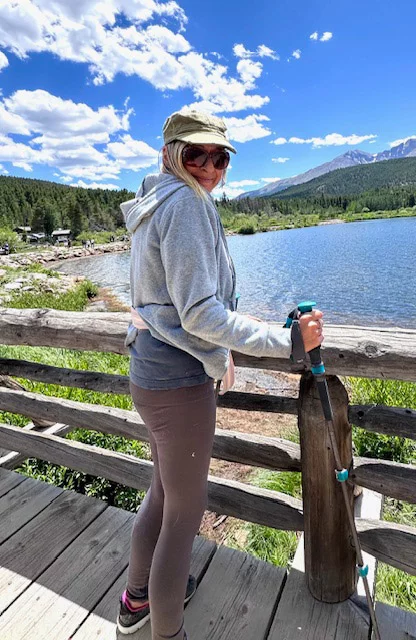
Unfortunately, during the procedure, Teresa went into heart failure. Her body was flooded with additional clots that traveled to other organs, including her brain, which caused a stroke on her right side, as well as to her left leg.
Teresa had entered a “thyroid storm” on the operating table, and her hormone levels were accelerating at a frightening rate, more than three times the normal level.
This is a rare and potentially fatal condition when an overactive thyroid generates staggeringly high and lethal levels of thyroid hormone. When this massive amount of hormones is released into the bloodstream, they can cause system-wide organ failure and serious heart problems, which is what Teresa was experiencing.
While only time would tell how severe the stroke would be and if it would cause cognitive damage, more than 10 hours of complicated vascular surgery performed by Yi helped save Teresa’s right leg. At the time, it was too dangerous for continued surgery on her left leg because of Teresa’s fragile condition, and doctors treated her clots with medication and blood thinners.
“This was a worst-case scenario of acute limb ischemia, which is the loss of blood flow to the leg that threatens limb loss,” said Yi, also an associate professor of vascular surgery at University of Colorado School of Medicine at the Anschutz Medical Campus. “It was not clear when she first arrived if she would be able to walk.”
With both her legs saved, Teresa’s doctors next worked on saving her vision. Although Teresa was unconscious, her eyes were wide open, as swollen tissue behind them was preventing her eyelids from closing.
The underlying condition that had caused the thyroid storm was affecting the muscles and fat behind her eyes and causing them to swell. The inflammation of the eye tissue had compressed the optic nerve as it pushed her eyes forward beyond the reach of her eyelids.
“She was in crisis mode,” Ozzello said. “She was in danger of losing both eyes.”
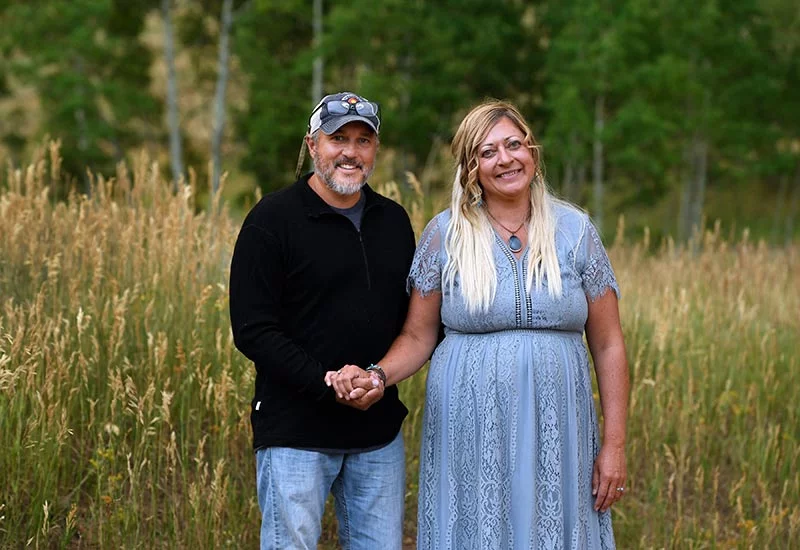
Teresa almost loses her eyesight, but an innovative treatment saves her vision
Most cases of hyperthyroidism, like the one Teresa suffered from, are caused by an autoimmune disorder called Graves’ disease. According to endocrinology specialist Gregory, Graves’ is a condition in which a person’s body develops antibodies that bind to receptors in the thyroid and stimulate it, causing it to overproduce thyroid hormones.
“Graves’ bypasses the feedback loop and safety mechanism that typically tells the thyroid to decrease the amount of hormone that is being produced, hence causing high levels of thyroid hormone,” she said.
Typically, a person with undiagnosed Graves’ disease might notice certain red flags over time, such as weight loss, heat intolerance, anxiety and tremors, with medication usually helping to regulate hormones and decrease symptoms.
Bulging eyes – what Teresa had – is a telltale sign of Graves’ disease, which affects more women than men and is more prevalent in people under 40.
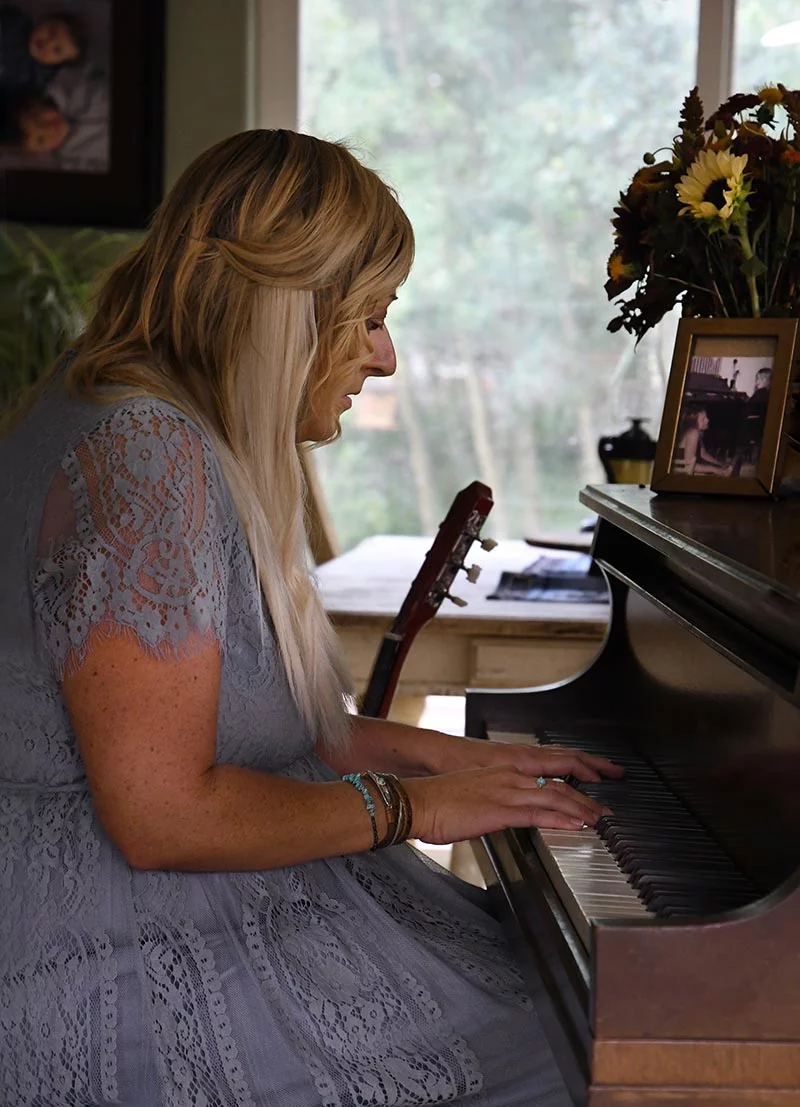
The first thing Ozzello did was to perform an emergency procedure where he carefully stitched Teresa’s eyelids closed so her eyes could begin healing from the scarring that had occurred on her corneas.
As Teresa began to regain consciousness in the coming weeks, the stitches would be taken out, though her eyes had to be taped shut during the night. Special masks and medical drops were used to keep her eyes hydrated, and contact lenses made of amniotic membrane tissues helped accelerate their repair.
Doctors have found that amniotic membranes have amazing healing properties and can help treat cornea injuries, Ozzella said.
“We were healing the surface of her eyes while the rest of her body was healing, and with the work of the other great medical teams. But we still had the problem of continued swelling and tissue pushing the eyes back out,” said Ozzello, also an assistant professor of ophthalmology at University of Colorado School of Medicine.
To remedy that, Teresa would eventually begin IV infusions of a drug called Tepezza every three weeks to help transition her eyes back to their natural position so she could close them on her own. The infusions reduce inflammation and block the protein that causes eye tissues to swell, he said.
Over time, Teresa’s eyes would lose their bulge and return to normal under Ozzello’s care, as she underwent eight months of IV treatments and would eventually return to 20-40 vision.
“Dr. Ozzello knew me so well and advocated for me to get the IV treatment. He saved my vision,” Teresa said.
While her sight was slowly being restored, she was facing a long rehab in the hospital and beyond. Would her cognitive abilities be the same, and would she sing and play instruments like she once did?
Teresa begins long recovery. Music played a key note in her healing
Some of Teresa’s most precious memories are of her father teaching her how to play the guitar as they listened to Bob Dylan, John Denver and other folk musicians. She learned to sing, play the piano (her parents got her a baby grand when she was 4) and even compose. For her entire life, music has remained a constant and would take center stage during her convalescence as well.
Teresa was unresponsive and in and out of consciousness for more than two weeks, breathing with a ventilator, on a feeding tube and with her eyes stitched closed. Tony, along with Teresa’s mother and siblings, gathered around her bed to talk and sing to her while they peppered her care team with questions about next steps.
After a few weeks, she slowly became more responsive. Doctors removed her breathing and feeding tubes, and she began to breathe on her own and to eat solid foods.
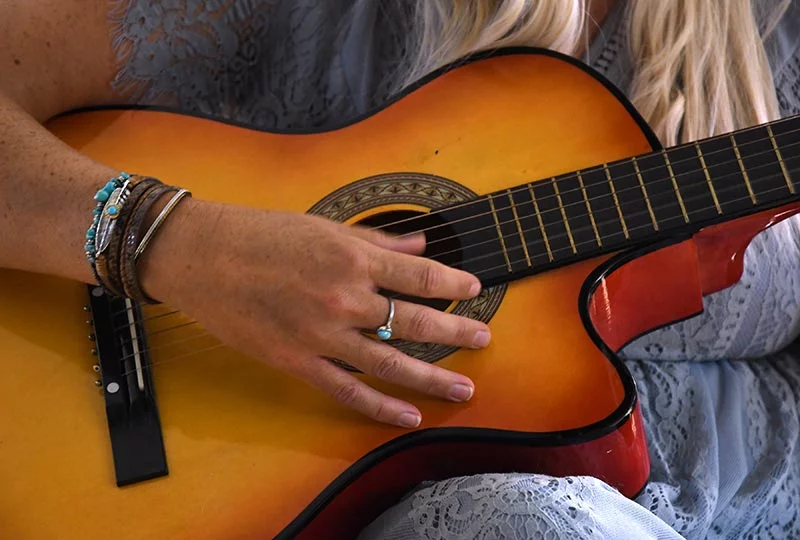
Teresa began physical and occupational therapy since she had lost function on the entire left side of her body, graduating from a wheelchair to a walker and finally, walking sticks – a long and steady rehab that would take many months.
While still in the hospital, her speech had not been affected by the stroke, but her memory was shaky at times, and she needed to relearn some writing skills and worked on letter and number recognition.
Tony had met Teresa a few years prior at the preschool where they both worked. He never left her side for the 40 days of her hospital stay, and his children, daughter Berkeley, and sons Canyon, Davan and Becklin, were devoted to her recuperation too.
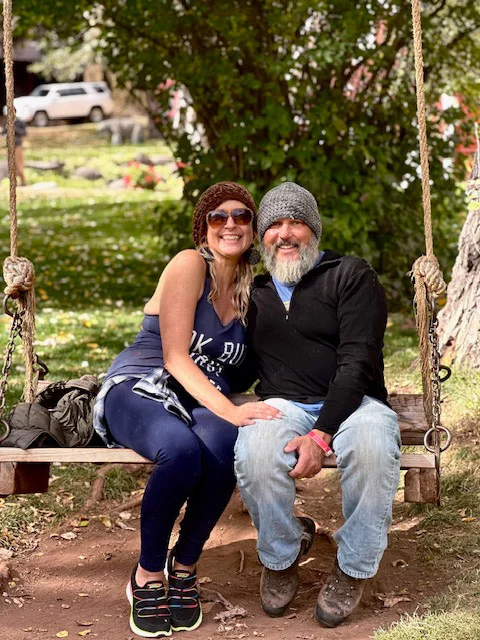
“They spent a lot of time with us at the hospital, and they took care of the house and our dogs, which allowed me to focus 100% on Teresa.”
He understood how important music was in motivating her and created an upbeat vibe in her room by playing certain songs throughout the day. At night, she would listen to music from one of her favorite artists, Trevor Hall, and his song “The Fruitfall Darkness,” which seemed particularly appropriate.
“This whole time while I was in bed with my eyes taped shut taught me that I couldn’t rush my healing. I was in sort of sensory deprivation, but I learned a lot about myself and that I was stronger than I ever realized.
“When I would get distressed, Tony would ask me, ‘What would you do for your preschool students if they were in the same situation?’ And the answer was, I would sing to them. So, I started singing to soothe him and to soothe me. We were both exhausted and scared.”
Since Teresa’s care team noticed her gravitational pull to music, they brought in music therapists to boost Teresa’s spirits. They visited her room several times each week, bringing instruments and using music interventions to “wake up” the left side of her body and cognition.
Just as Teresa had once taught her preschool students, she practiced banging on a drum, tapping a few notes on a keyboard and strumming some strings on a guitar.
Soon she was singing and playing tunes with the therapists; she recalled choking up while singing John Denver’s “Sunshine on my Shoulder,” which had been a favorite of her dad’s.
“I felt like he was there with me while I got better,” she said. “The music therapy program was comforting and inspired me to get back on my guitar and get sensation back in my hands.”
According to music therapist Wibben, singing and playing musical instruments are important, evidence-based components that help patients like Teresa heal. Music boosts patients’ physical, emotional, cognitive and even spiritual health.
“We used our specialized training in how music impacts and changes the brain to support Teresa cognitively and in her physical recovery. We were part of her PT, OT and speech rehab team, but using music as the tool.”
That therapy included Teresa playing instruments to support strength, dexterity and endurance on her left side, which had been weakened by the stroke. Also, cognitive tasks such as creating melodies and mini compositions helped her memory and executive function skills.
Tony said there was a moment early on when she was coming out of her coma and couldn’t yet move the left side of her body. His children noticed she was instinctively moving her right hand like she was strumming a guitar. It was the first time she had moved her fingers.
A few weeks later, Teresa’s family brought her down to the hospital’s main lobby, and she started to play a simple song on the grand piano alongside one of Tony’s sons.
As Teresa was relearning and retraining her body and brain, her spirit also began to heal.
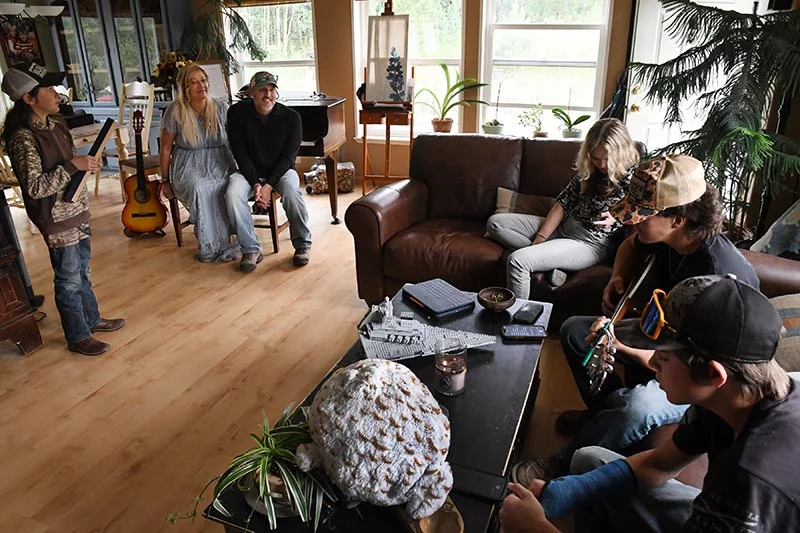
Teresa composes a song as an homage to her partner
More than a year after Teresa returned home from the hospital, she is driving, hiking, singing and playing music again. Though she still has Graves’, her hormone levels are regulated through medication, she has routine eye checkups, and her only residual health issue is some pain in her left foot.
“I’m feeling amazing, and I’m getting stronger and stronger.”
She credits her family, Tony and his children and the UCHealth care team for her happy ending.
“I want to thank them from the bottom of my heart. All the doctors and hospital staff who spent countless hours saving my life – you’re not practitioners, you are part of my family.”
Her physicians have marveled at Teresa’s strength.
“It’s a great outcome,” said her vascular surgeon Yi. “There is something truly uplifting about her recovery and how important music has been to her throughout her ordeal.”
According to Gregory, now a doctor of endocrinology, Teresa put the necessary work into her rehab, which made her recovery possible.
“She always had a positive outlook and even when she was really sick, she saw the long game,” Gregory said. “She’s extremely kind, and she was happy to do whatever she could to get better … and Tony always pushed to advocate for her.”
When she regained full mobility in her fingers, Teresa wrote a song to Tony and his children to thank them for their support: “No Rainbows Without Rain,” in which she sings and plays the guitar and piano.
“I wrote it out of love, and with the intention to help us all heal. I wrote it to tell our story.”
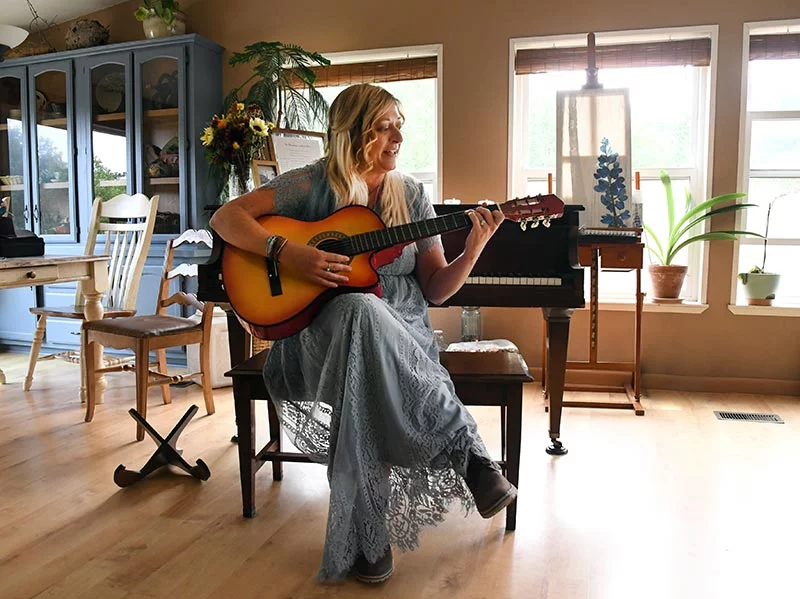
Tony had the song lyrics printed so that one of her favorite artists, Trevor Hall, whom she had listened to during so many hours during her recovery, could inscribe them with a personal message.
“We were in the moment: Every minute, every hour, every day, we would celebrate the victories, no matter how small. Whether it was a change in a medication or finally removing an IV or her being able to pick up a blueberry on her own for a meal… all those teeny victories helped us keep a positive attitude.”
Back home, Teresa has been playing the piano daily and even giving some lessons. Performing, singing and composing music has helped her regain not just physical strength and muscle memory, but also a part of herself she almost lost.
“I had the odds stacked against me, but I didn’t give up. Now, I’d like to work in an area where I can incorporate the therapeutic benefits of music with my own story in a way to help people going through what I did and pay it forward. Music makes connections possible. Music is about healing.”
